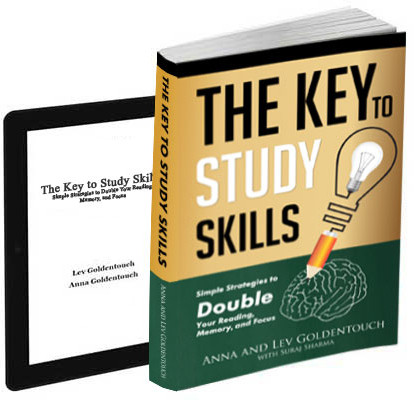In software development, QA (Quality Assurance) and testing are often the last lines of defense before a product reaches the customer. While developers build the functionality, it’s the testers who ensure that nothing breaks, nothing crashes, and the user experience remains seamless. But quality assurance is not merely about spotting bugs—it’s about understanding systems deeply, thinking creatively, and foreseeing problems even before they occur.
At its core, QA is about trust. It’s about building confidence in a product so that end-users feel secure using it and stakeholders are assured of its performance. To achieve this, QA testers act as the bridge between developers, product designers, and users—translating ideas into tests, failures into feedback, and uncertainties into confidence.
Explore how integration and programmer psychology play a role in deeper testing: Programmers and Integration.
The Three Perspectives Every QA Tester Must Master
The first step in QA is understanding how the software behaves. This usually involves testing the system alongside developers to gain insight into all its features and functionalities. But here’s where it gets challenging: developers typically think in terms of code, product managers think in terms of features, and users think in terms of outcomes. QA testers must understand all three perspectives simultaneously.
- The developer’s lens focuses on how the program was built and what may cause it to fail.
- The designer’s vision is about usability, user interface, and product flow.
- The user’s experience is centered on results, efficiency, and clarity.
Visualizing and balancing these three mental models is no small feat. A seasoned QA professional often associates specific personalities or use cases with each viewpoint. This mental technique helps testers switch context smoothly and empathize with different stakeholders. If you’re interested in how developers think and how it affects system performance, read: Tips for Functional Programming.
Deep Testing: From Checklists to Creativity
Once the system is running and the features are operational, it’s time to verify the long list of system specifications. QA testers usually have access to the full documentation and often encounter areas where the developer’s implementation falls short. Sometimes, it’s not due to negligence but due to a lack of clarity, time, or understanding.
This is where creativity kicks in. A good QA engineer doesn’t just follow test cases—they design experiments. Thinking of building toy models with Lego, using paper prototypes, or even gamifying certain tests with candies and dice rolls to simulate behavior. These aren’t just gimmicks—they’re effective ways to test real-world conditions.
Testers are often the ones pushing boundaries and exploring edge cases. A regular developer might only test what they built. But a tester asks: “What if the user inputs 10,000 characters?” or “What if the internet disconnects mid-process?” or “What if the server time differs from the local time?”
They don’t just stop at the known—they also explore the unknown. This is very similar to how hackers think, which is why some of the best testers in the industry have hacker backgrounds. Want to know more about how IQ and creativity connect in programming? Read this insightful article: The Surprising IQ Score of Programmers
Simulating the Unpredictable: Stress, Load, and Chaos Testing
Once all standard features are tested, testers move to simulated environments. This includes:
- Load testing – how much traffic or data can the system handle?
- Stress testing – what happens when the system is overwhelmed?
- Chaos testing – what happens when things go wrong at random?
The aim is not just to verify system performance, but also to understand its limits. Testers need to answer tough questions:
- Will the application crash?
- How gracefully will it recover?
- Can the system alert the admin before things break?
This testing phase often requires complex scripts, emulated environments, and visualization dashboards. A good QA tester doesn’t just gather data—they translate it into clear insights and actionable feedback.
Memory, Creativity, and Cognitive Models in QA
What sets exceptional testers apart isn’t just technical skill—it’s their cognitive strength. QA testers rely heavily on:
- Working memory is used to hold multiple test states.
- Visual memory to recall UI changes.
- Associative thinking to track dependencies across modules.
- Creative reasoning to identify problems no one else has imagined.
These skills can be trained. Through techniques like mental markers, mind maps, and spaced repetition, testers can significantly improve memory and problem-solving abilities. You can learn these memory tools in the KeyToStudy Memory Masterclass—a practical course to help you train your mind like a top-tier QA or programmer.
Reporting: Translating Failures Into Action
After testing is done, the real challenge begins—reporting. QA reports must:
- Capture all issues clearly and objectively.
- Include steps to reproduce bugs.
- Prioritize the bugs based on severity.
- Suggest improvements or alternative workflows.
- Visualize the overall test results with charts or summaries.
This is where communication becomes key. It’s not just about pointing fingers—it’s about collaboration. A great QA tester knows how to communicate with empathy, understanding that bugs are not failures but part of the process of crafting excellence.
Beyond the Checklist: The QA Mindset
Let’s move beyond the checklist mentality. QA is not about ticking boxes; it’s about ensuring real-world quality. Here’s what defines the modern QA mindset:
- User-Centered Thinking: Always test with the end user in mind.
- Curiosity: Explore every corner of the system.
- Resilience: Handle repetition, criticism, and deadlines without burnout.
- Adaptability: Switch between roles and perspectives easily.
- Technical Empathy: Understand developers’ limitations and product constraints.
As software systems get more complex, the role of QA becomes more strategic. Today’s QA professionals are not just bug-hunters; they’re system-thinkers, user advocates, and innovation enablers.
To cultivate curiosity for QA and learning in general, explore this article: Curiosity and Learning.
When QA Meets Cognitive Science
You may not realize it, but many of the cognitive tools used in QA are rooted in psychology and neuroscience. Pattern recognition, memory chunking, and spatial memory—all these play a role. This is where KeyToStudy’s learning systems can be especially valuable for professionals.
Explore advanced courses to supercharge your cognitive tools and work with greater mental clarity:
👉 Programming and Projects Subscription
And for regular updates, practical advice, and community support, follow our Facebook page:
🔗 KeyToStudy on Facebook
Final Thoughts: QA as a Career and a Calling
The world needs more creative, detail-oriented, and resilient QA professionals. This is not a job for those who want fame or quick wins. It’s for those who find satisfaction in invisible victories: a crash avoided, a bug fixed before release, a user never frustrated.
If you’re a programmer transitioning into QA, or someone who enjoys logic, memory challenges, and working with systems, QA could be your calling.
By combining creative thinking, strong memory skills, empathy, and a hacker-like mindset, you can become not just a tester, but a quality architect—the unsung hero behind every successful product.
Let’s stop thinking of QA as the final checkbox and start treating it as the guardian of software integrity.

Get 4 Free Sample Chapters of the Key To Study Book
Get access to advanced training, and a selection of free apps to train your reading speed and visual memory

